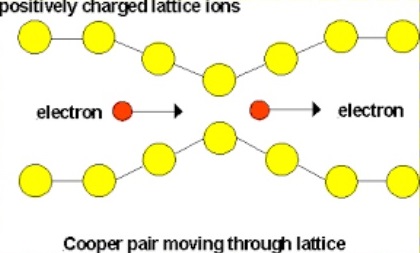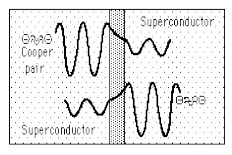The phenomena of levitation of a magnet above a cooled superconductor is known as the Meissner Effect. If a superconductor is cooled below its critical temperature while in a magnetic field, the magnetic field surrounds but does not penetrate the superconductor. The magnet induces current in the superconductor which creates a counter-magnetic force that causes the two materials to repel. This can be seen as the magnet is levitated above the superconductor.
Magnetic suspension or levitation is a method by which an object is suspended with no support other than magnetic fields so the object seems to be hanging without any mean.
Meissner effect was discovered by German physicists Walther Meissner and Robert Ochsenfeld. This happens when a material makes the transition from the normal to superconducting state, it actively excludes magnetic fields from its interior.
The phenomena of expelling magnetic flux experienced by superconductors is called the Meissner Effect. The Meissner Effect can be understood as perfect diamagnetism, where the magnetic moment of the material cancels the external field or M = -H.
The BCS Theory & Meissner Effect
The BCS theory explains the electron-Lattice Interactions.
A passing electron attracts the lattice, causing a slight ripple toward its path.
Another electron passing in the opposite direction is attracted to that displacement.

BCS theory suggests that superconductors have zero electrical resistance below critical temperatures because at that temperatures the electrons pass unhindered through the crystal lattice and therefore lose energy. The theory states that the super-current in a superconductor is carried by many million bound electron pairs, called Cooper Pairs.
What are Cooper Pairs?
In condensed matter physics, a Cooper pair or BCS pair is a pair of electrons (or other fermions) bound together at low temperatures in a certain manner first described in 1956 by American physicist Leon Cooper.
The physical idea is that, the first electron polarizes the medium by attracting positive ions & these excess positive ions in turn attract the second electron (with opposite spin and momenta), giving an effective attractive interaction between the electrons.

In 1957, Bardeen, Cooper, and Schrieffer (BCS) theorized that superconductivity was the result of electrons binding to form particles called Cooper pairs. The electrons exchange vibrational lattice energy called phonons which can result in the electrons becoming attracted to one another.
Recently, antiferromagnetism has been linked to the explanation of high temperature ceramic superconductivity. By changing the chemical composition, BaFe2(As1-xPx)2 has been observed to have an internal magnetic critical point. As the composition is changed, antiferromagnetism decreases until it disappears, resulting in superconductivity.
Below a critical temperature (Tc), the resistance of a superconducting material becomes almost zero causing current to flow indefinitely and with no power loss. No voltage difference is needed to maintain a current. Above a current density, superconductivity is lost in the material. A supercurrent can flow across an insulating junction in what is called the Josephson Effect. Cooper pairs can do this due to quantum tunneling.

Magnetic Levitation
Application of levitation effect is in the form of high speed Magnetic Levitation Trains which are useful for mass transport. The concept is to utilize levitation which eliminates friction between the train and the track. Hence allowing the trains to increase their speed dramatically.
Meissner levitation Video Demonstration
A strong magnet is placed on a YBaCuO pellet. The pellet is cooled with liquid nitrogen. Under the critical temperature it becomes superconducting, the magnet levitates – this is called the “Meissner effect“.
Discover more from Electrical Engineering 123
Subscribe to get the latest posts to your email.

